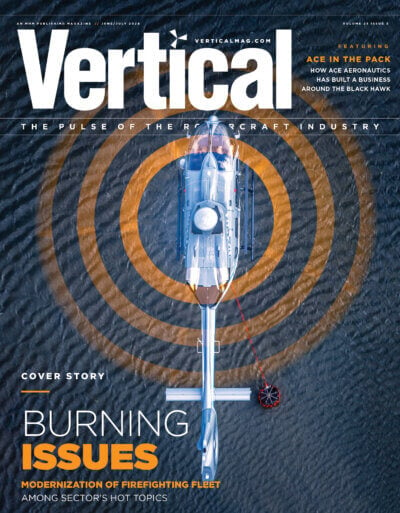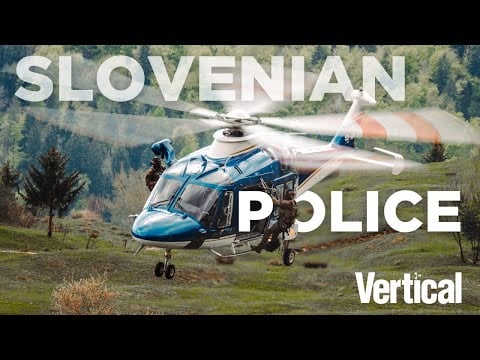Industry opposition has developed against a proposed rule in the United States that would require prescriptive noise certification for eVTOL aircraft seeking special airworthiness certificates as light sport aircraft.
The Federal Aviation Administration (FAA), in its Modernization of Special Airworthiness Certification (MOSAIC) notice of proposed rulemaking originally published in July 2023, is proposing making light sport aircraft meet noise standards required of type certified aircraft under part 36, an expensive, rigorous and time-consuming process. A prescriptive process is where the FAA directs, in incredible detail, exactly how a developer must test to earn certification.
MOSAIC would expand the FAA’s light sport aircraft category to include larger and more powerful aircraft weighing as much as 3,000 pounds (1,360 kilograms). This more than doubles the weight of aircraft under the current definition of light sport of 1,320 lb. (600 kg). Current light sport aircraft are not required to meet noise certification requirements.
In its proposed rules, the FAA said there are tens of thousands of aircraft flying that do not conform to type certificates — many of them nearly identical and have never been subject to noise or testing limits. These include aircraft that may be similar to, or larger than, aircraft with type certificates that are already subject to noise requirements.
The FAA said it did not anticipate the growth of aircraft that do not conform to type certificates when the categories were created, and the noise requirements did not keep pace with the growth of these categories because they were based on historical use and expectations.
“The FAA can no longer justify the exclusion of these aircraft and their noise impact on communities under its statutory responsibility, nor can it let the growth continue by changing the names or the categories,” the agency said.
The General Aviation Manufacturers Association (GAMA) opposes the part 36 noise certification requirement being applied to light sport aircraft under MOSAIC. Walter Desrosier, GAMA vice president of engineering and maintenance, told Vertical that the noise certification requirement is one of the organization’s most significant concerns as it would be overly burdensome and prescriptive. Desrosier said the FAA is proposing the part 36 noise requirement to rotorcraft, powered-lift and fixed-wing aircraft included in the expanded light sport aircraft category, as well as some experimental light sport aircraft.
Instead, GAMA recommends using a consensus standard developed by industry, an approach Desrosier said is consistent with how the FAA addresses flight safety aspects of light sport aircraft.
“They should apply the same approach to address any noise elements that need to be addressed by light sport aircraft,” Desrosier said.
AIR, an eVTOL developer which operates in both Israel and Texas, also recommends basing noise requirements for light sport aircraft under consensus standards. AIR, in its submitted comments to the agency, said applying part 36 noise requirements to light sport aircraft does not comply with the rule intent of self-declaration certification.
Requiring light sport aircraft to certify under part 36 noise requirements would add about 12 to 18 months to aircraft development, according to a consultant that works with eVTOL developers. Adam Morrison, CEO of Streamline Designs of Franklin, Indiana, told Vertical that he has worked through the noise compliance process on type certification projects roughly five times, including once in the last year.
Morrison said the noise test can take less than an hour, but the process can be complicated by the scheduling and logistics required to get lined up with the right FAA officials, of which he said there are few. Not only must the test be witnessed by FAA personnel, in most cases, he said, a part 36 noise certification flight requires an FAA test pilot in the aircraft. It can take about three to nine months to get everyone’s calendar lined up to schedule the actual event.
The part 36 noise requirement process, he said, also requires expensive audio equipment, such as specialized microphones and recording equipment that must be used according to prescriptive FAA rules. These include specifying surrounding noise levels, the aircraft’s flight profile and flying a variety of test points.
“[It’s] a pretty onerous process for what turns out to be a relatively simple test,” Morrison said.
Morrison also proposes the FAA use a consensus standard for a noise requirement for light sport aircraft under MOSAIC. He said he helped lead ASTM’s Committee F37 on Light Sport Aircraft, which addresses issues related to design, performance, quality acceptance tests and safety monitoring for light sport aircraft. Morrison said the committee has developed a noise standard that is being considered for approval by ASTM members.
FAA spokesman Ian Gregor declined to comment on Jan. 31, citing a pending rulemaking project. He said the FAA’s next step is to review the more than 1,400 public comments received on MOSAIC, which had its public comment period end on Jan. 22
The FAA said it is proposing MOSAIC to reorganize the issuance of special airworthiness certificates to reflect the current realities of certification, and it presents the opportunity to recognize and address the noise created by these non-type certificated aircraft. This proposed expansion of the applicability of part 36, the agency said, acknowledges that noise certification is part of the overall certification scheme for aircraft and is appropriate for modernization as the agency modernizes its issuance of special airworthiness certificates.
Part 36 would not apply to light sport category aircraft or experimental light sport category aircraft as long as their airworthiness certificate was issued before the effective date of the final rule, and for as long as the aircraft remains unaltered.










An STC (even for GAMI FUEL) becomes an alteration
Noise testing for a small manufacturer at a random location is quite burdensome in cost and time. If a noise regulation is imposed then a standard government equipped test site should be provided. It should not be very hard for a small manufacturer to ship a sample aircraft to some test site and schedule a government supplied test.